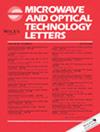This paper presents a novel microstrip patch antenna with a quaternionic metasurface. The quaternionic metasurface is designed using a pair of polarization conversion metasurface unit cells and the other pair of artificial magnetic conductor unit cells. The designed metasurface is used to reduce the radar signature of a microstrip patch antenna. The designed quaternionic metasurface shows an overall RCS reduction bandwidth of 115.62% over the frequency range of 6.55–24.5 GHz and 10-dB RCS reduction bandwidth of 65.86% over the frequency range of 8.3–16.45 GHz. The designed low RCS microstrip patch antenna using quaternionic metasurface shows overall RCS reduction bandwidth from 6.8 to 24.4 GHz (112.82%) as compared with the metallic plate and the reference patch for TE mode. It shows 10 dB RCS reduction bandwidth from 8.31 to 9.85 GHz (16.96%) and 12.38 to 16.34 GHz (27.58%) when compared with the reference patch for TE mode. Considering TM mode, the overall RCS reduction is obtained from 6.9 to 24 GHz (110.68%) as compared with the reference patch antenna. A total of 10 dB RCS reduction is observed over the frequency band of 8.4–9.89 GHz (16.29%) and 12.4–16.87 GHz (30.54%) as compared with the conventional patch antenna in the same plane. The low RCS patch antenna shows off remarkable in-band and out-of-band RCS reduction. The proposed concept gives wide RCS reduction bandwidth that may not be obtained by the low RCS metasurface designed by only PCM or AMC unit cells.


